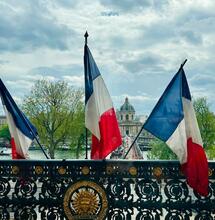Barcelona's Hemp Museum: History, Medicine and Prohibition

Whether you’re a user, an admirer, a history-lover, or a plant and environment enthusiast, something in the Hash Marihuana & Hemp Museum will grab your eye. In Barcelona, cannabis has been decriminalized for personal use, but in many countries the plant remains illegal. The museum documents the social treatment of cannabis in the modern day and right back to prohibition and before. Check out this museum to find out some incredible secrets behind the history of hemp, medicinal marijuana, and the prohibition. You may be surprised to learn that prior to the 1930s, hemp and marihuana were widely and legally used
About the Building
Palau Mornau, a sixteenth-century family home on Carrer Ample is home to Barcelona’s Hash Marihuana & Hemp Museum. It is a beautiful building with a Modernist twist, having been renovated by the architect Manuel J. Raspall in the early twentieth century. The stain glass, which you can see from the street, has some quite distinctive green leaves in its pattern… Though the stain glass is not original to the sixteenth century building, it’s certainly worth taking a closer look from the balcony. The balconies have outdoor seating and even has a few Hemp plants (though I was assured that it was the low-THC kind). The museum’s twin, naturally, is in Amsterdam, a city that has become increasingly popular for marihuana tourism.
Botany and Biology
The first room you will enter on your tour round the museum is the Botany Room. Here you can learn all about the biology behind the plant’s fertilization to the many ways it has been used in medicine over the years. Some fun trivia: like many other plants, the seeds are produced when the female flower is fertilized by the male flower, except the cannabis plant relies on wind rather than insects to carry the pollen between plants.
Pipes galore
One of my favourite parts of the museum is the display of ancient bongs and pipes. Some users of cannabis may have thought their methods modern, but the museum displays Hookah (an ancient kind of bong) from as early as the seventeenth century. These were Asian and Middle-Eastern water-pipes that cooled the smoke by filtering it through water. The display cabinet has everything from the earthy, to the shiny, to the metallic.
The Old Masters Room
If you look carefully at the paintings displayed in the Old Masters Room you can spot the various pipes being smoked by the depicted characters. Many of these paintings are Dutch, which is has been a long-term hot spot for cannabis smoking. Many of the paintings in this room depict fifteenth-century coffee shops where sailors would smoke tobacco mixed with mairhuana. In the case of many, the canvas itself is made from hemp (the word ‘canvas’ is actually etymologically linked to ‘cannabis’) and the painting oil is hemp-based. Featuring pans in the foreground made from hemp and people wearing hemp clothes, the paintings really are one big advert for hemp.
Columbus and Hemp
One of the most interesting parts of my visit was finding that columbus-shipabout Christopher Columbus’ voyage to America. Hemp was used to make the sails, the ropes, and the crew’s clothing, so really, Columbus wouldn’t have made his discovery without hemp. But it wasn’t just Columbus who used hemp and marihuana. Many famous poets and writers from the sixteenth century and beyond are known to have used it for recreational purposes: the French writer Gautier even created a club called Le Club des Hashischins where some of the world’s most aclaimed writers of the era gathered to smoke hashish. In the Industrial Room the museum takes your through the processes with which you can make fabric, fishing nets, and much more. In the twenty-first century, hemp is returning as the new ecologically-sound material. You’ll learn about how it is used to make car doors, chairs, skateboards, and a whole load of other modern everyday items. Hemp seeds, with their high nutritional content, high quality protein, and being low in saturated fats, may even be the new superfood.
World War II: A Temporary Period of Legalization
World War II was the first time since before the 1930s prohibition that hemp was de-criminalized in America. The government in fact encouraged people to grow it in order to provide strong natural fibres for the war effort. At the museum you can watch a 16 minute film called Hemp for Victory, which was produced by the government to encourage farmers to grow it. This poster (featured left) was for me one of the most amusing displays in the museum as it demonstrates so clearly the hypocrisies and practicalities surrounding drug prohibition. After the war hemp was once again prohibited and the government denied any existence of the film. Far from reducing usage, driving the plant underground, so to speak, may even have contributed to its highly popular status in the West. The celebration of cannabis has become something of a counter-culture in today’s music scene, openly supported by artists Snoop Dogg, Bob Dylan, Bob Marley, and others.
Marihuana a Medicine?
Marihuana has been grown throughout history for its medical uses.cannabis medicine bottle It was brought to the Western world in the early nineteenth century by Dr William Brooke O’Shaughnessy and used to lessen child birth pain, hysteria, and menstrual pains. Cannabis continued to be used for the next 100 years before the 1930s prohibition and was popularized by big pharmaceutical companies. It is only in recent years that research has picked up again and cannabis is being prescribed for cancer patients undergoing chemotherapy, people suffering from HIV/AIDS, and even arthritius and rheumatism. Unlike many other illegal drugs, cannabis has very low addictive qualities and it is impossible to overdose on it. So, can we expect the cannabis plant to be decriminalized in the near future? We shall have to wait and see. Source: barcelonaconnect.com



